If you have ever had a loose concrete anchor, you know how frustrating it can be. But thankfully, there is an easy way to fix it. In this blog post, we will show you how to fix a loose concrete anchor.
Summary:
When a concrete anchor becomes loose, it can be easily fixed with a few simple steps. Begin by examining the anchor and then carefully removing it from the concrete surface. Clean out the hole with a brush to remove any debris and then insert the new anchor in its place.
Apply a suitable concrete adhesive to the area around the anchor, allowing it to dry before testing if it is secure. Once you have verified that everything is secure, your loose concrete anchor is now successfully fixed!
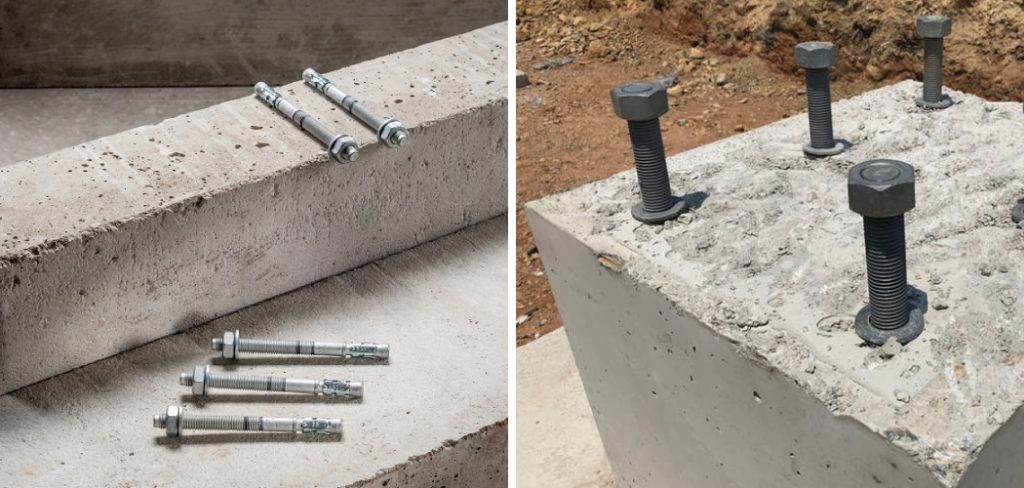
What Is a Concrete Anchor?
A concrete anchor is a device that is used to attach objects or structural members to a concrete slab. There are many different types of anchors, each with its own specific application. It is important to choose the right anchor for the job in order to ensure the safety and stability of the structure.
Why It’s Important to Fix a Loose Concrete Anchor?
When it comes to repairing loose concrete anchors, you may be wondering if it’s worth the time and effort. After all, the anchor is just a small part of the overall concrete structure. However, fixing a loose concrete anchor is very important – here’s why:
- Loose anchors can cause serious damage to the surrounding concrete. This is because it will be able to move around more freely. This movement can stress the surrounding concrete, leading to cracks or even complete breakage.
- Loose anchors can be dangerous. If an anchor is loose, it will not be as effective at doing its job. This means that it could come loose completely, posing a serious safety hazard.
- Loose anchors can be unsightly. It will be visible to anyone who sees the concrete structure. This can make the overall appearance of the concrete structure look poor.
How to Fix a Loose Concrete Anchor Step by Step Guide
Step 1: Assess the Situation
Before attempting any repairs, it’s crucial to determine the severity of the loose concrete anchor and its cause. Inspect the anchor and the surrounding concrete for any signs of damage, such as cracks, spalling, or chipping. The condition of the concrete will help you decide the most appropriate repair method. Additionally, consider the load or stress applied to the anchor to understand if it may require additional reinforcement.
Step 2: Gather Necessary Tools and Materials
To fix a loose concrete anchor, you’ll need the following tools and materials:
- Hammer drill with a masonry bit (if drilling is required)
- Vacuum or compressed air (for cleaning the hole)
- Epoxy or other suitable adhesive (for adhesive-based repairs)
- Mechanical anchor or expansion anchor (for replacement)
- Wrench or socket set (for tightening)
- Protective eyewear and gloves
Step 3: Remove the Loose Concrete Anchor (If Necessary)
If the anchor is severely loose or damaged, it may be necessary to remove it entirely. To do this, carefully unscrew or pry the anchor from the concrete, taking care not to damage the surrounding material. If the anchor is embedded deeply or cannot be removed by hand, you may need to use a hammer drill with a masonry bit to drill around the anchor to loosen it.
Step 4: Clean the Hole
Once the loose anchor has been removed or if you’re repairing an anchor that is still in place, clean the hole thoroughly. Use a vacuum or compressed air to remove any debris, dust, or loose particles from the hole. This step is crucial for ensuring a strong bond between the anchor and the concrete during the repair process.
Step 5: Choose the Appropriate Repair Method
Depending on the cause of the loose anchor and the condition of the concrete, you’ll need to choose the most suitable repair method. There are two primary options for fixing a loose concrete anchor:
- Adhesive-based repair: This method involves injecting epoxy or another suitable adhesive into the hole to bond the anchor to the concrete. This option is ideal for situations where the concrete is in good condition, and the anchor is still structurally sound.
- Anchor replacement: If the anchor is damaged or the concrete surrounding the hole is compromised, it may be necessary to replace the anchor with a new one. In this case, you can either install a new anchor in the same hole (if the hole is still structurally sound) or drill a new hole nearby for the new anchor.
Step 6: Perform the Adhesive-Based Repair (If Applicable)
If you’ve chosen to use an adhesive-based repair method, follow these steps:
a. Prepare the adhesive according to the manufacturer’s instructions. This may involve mixing two components or loading the adhesive into a dispensing tool.
b. Inject the adhesive into the hole, filling it approximately halfway. Be sure to follow the manufacturer’s guidelines for the proper amount of adhesive.
c. Insert the anchor into the hole, pushing it in until it is fully seated and the adhesive fills the hole completely. You may need to twist or tap the anchor gently to ensure it is properly embedded in the adhesive.
d. Allow the adhesive to cure according to the manufacturer’s recommended time. Do not apply any load or stress to the anchor during this time.
Step 7: Install a New Anchor (If Applicable)
If you’ve chosen to replace the anchor, follow these steps:
a. Drill a new hole, if necessary, using a hammer drill with a masonry bit that is appropriately sized for the new anchor. Be sure to follow the manufacturer’s guidelines for hole depth and diameter.
b. Clean the hole thoroughly using a vacuum or compressed air to remove any debris, dust, or loose particles.
c. Insert the new anchor into the hole, following the manufacturer’s instructions for installation. This may involve tapping the anchor into place with a hammer or tightening it with a wrench or socket set.
d. If using an expansion anchor, ensure that it expands correctly as you tighten it. This will secure the anchor in place and create a strong bond with the concrete.
Step 8: Test the Anchor’s Stability
Once the adhesive has cured or the new anchor has been installed, test the stability of the anchor by gently applying pressure or load to it. This will help you determine if the repair was successful and if the anchor is now securely fixed in the concrete. If the anchor remains loose or shows signs of movement, reevaluate the repair method and consider consulting a professional for further guidance.
Step 9: Reattach Any Fixtures or Hardware
If you removed any fixtures or hardware connected to the loose anchor during the repair process, now is the time to reattach them. Ensure that the anchor is capable of supporting the intended load before reinstalling any fixtures, and tighten any bolts or fasteners securely.
Step 10: Monitor the Anchor’s Condition
After fixing the loose concrete anchor, it’s essential to monitor its condition and stability regularly. Keep an eye out for any signs of movement, cracking, or other issues that may indicate a recurrence of the problem. Address any concerns promptly to prevent further damage or the need for more extensive repairs in the future.
By following these steps, you can effectively repair a loose concrete anchor and ensure the stability and safety of the fixtures or hardware it supports. Always consult the manufacturer’s guidelines for the specific anchor and adhesive products you’re using, as their recommendations may vary. Additionally, consider seeking the advice of a professional contractor or engineer if you’re unsure about the best repair method for your situation or if the issue persists after attempting these steps. Regular inspections and maintenance of concrete anchors can help prevent future issues and ensure the long-term stability of your installation.
Step 1: Examine the Anchor
If your anchor is loose, you need to examine it to figure out how bad the damage is. If it’s only slightly loose, you might be able to fix it. But if the anchor is severely damaged or completely detached, you need to replace it.
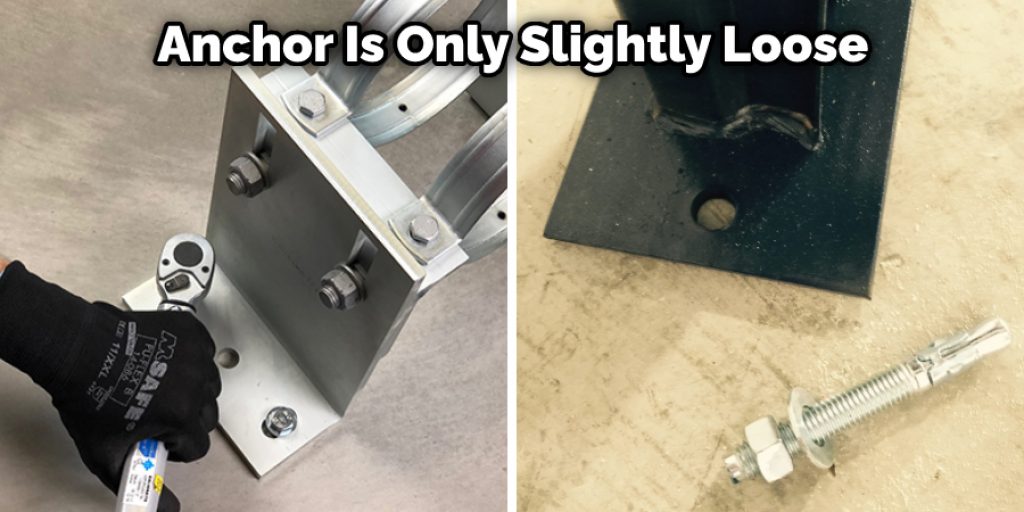
Step 2: Remove the Old Anchor
If the anchor is broken or detached, you must remove it before continuing. To do this, use a chisel and hammer to break away any concrete still attached to the anchor. Once the concrete is gone, use a drill to remove the anchor from the hole.
Step 3: Clean the Hole
Once the old anchor has been removed, you will need to clean the hole. This will ensure that the new anchor will be able to bond properly. First, use a wire brush to remove any debris from the hole. Then, use a vacuum to suck up any remaining dirt or dust. Use a damp cloth to wipe down the hole so that it is completely clean.
Step 4: Insert the New Anchor
You need to put a new anchor in. If you’re using a concrete screw, screw it in. If you’re using a dowel-type anchor, tap it in with a hammer. Then use a wrench to tighten the nut on top of the anchor.
Step 5: Apply Concrete Adhesive
Once the new anchor is in place, you will need to apply a concrete adhesive. This will help secure the anchor further and prevent it from becoming loose again. First, apply the adhesive around the base of the anchor. Then, use a putty knife to spread it evenly.
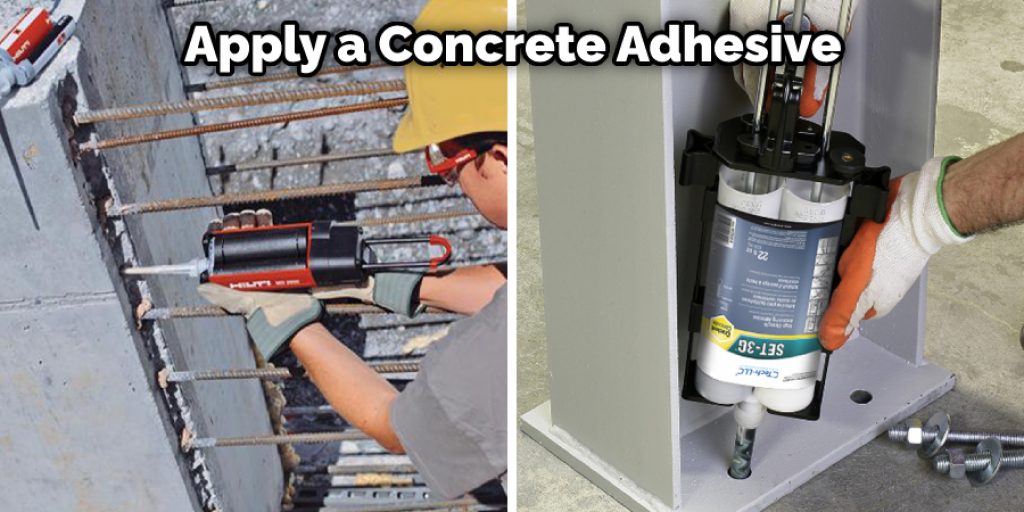
Step 6: Allow the Adhesive to Dry
After applying the adhesive, allow it to dry for at least 24 hours. This will give the adhesive time to set and bond with the concrete. Once it is dry, your anchor should be securely in place.
Step 7: Test the Anchor
Once the adhesive has dried, it is time to test the anchor. Place a heavy object on top of the anchor and try to pull it out. If it does not budge, then your repair was successful.
Step 8: Repeat as Needed
If the anchor is still not secure after following these steps, you may need to repeat them. Sometimes it takes a few attempts to get the anchor to hold properly. Be patient and continue following the steps until the anchor is completely secure. Once it is, you can use it as usual.
Now that you know how to fix a loose concrete anchor, you can rest assured that your anchor will be secure and stable. Follow these steps to ensure a successful repair.
Prevent Future Damage
In order to prevent the anchor from becoming loose again, it is important to take some preventive measures. First, avoid over-tightening the anchor. This can damage the concrete and cause the anchor to become loose. Second, check the anchor periodically to make sure it is still secure. If it starts to become loose, you can retighten it before it becomes a problem. Finally, make sure the hole in the concrete is the correct size. If it is too big, the anchor will not be able to grip properly and will become loose.
If you follow these tips, you should be able to keep your concrete anchor secure and prevent it from becoming a problem.
Types of Anchors and When to Use Them
There are three types of concrete anchors: Wedge Anchors, Drop-In Anchors, and Sleeve Anchors. Each type has its advantages and disadvantages that make it more or less suitable for a particular job.
Wedge Anchors:
Wedge anchors are the most common type of anchor used in concrete. They’re easy to install and remove and have high holding power. The downside to wedge anchors is that they’re not as strong as some of the other types of anchors, and they’re not recommended for use in seismic areas.
Drop-In Anchors:
Drop-in anchors are another type of anchor used in concrete. Drop-in anchors look like small cylinders with an internal thread. They are easy to install and remove, making them ideal for applications where the fixture will need to be removed frequently.
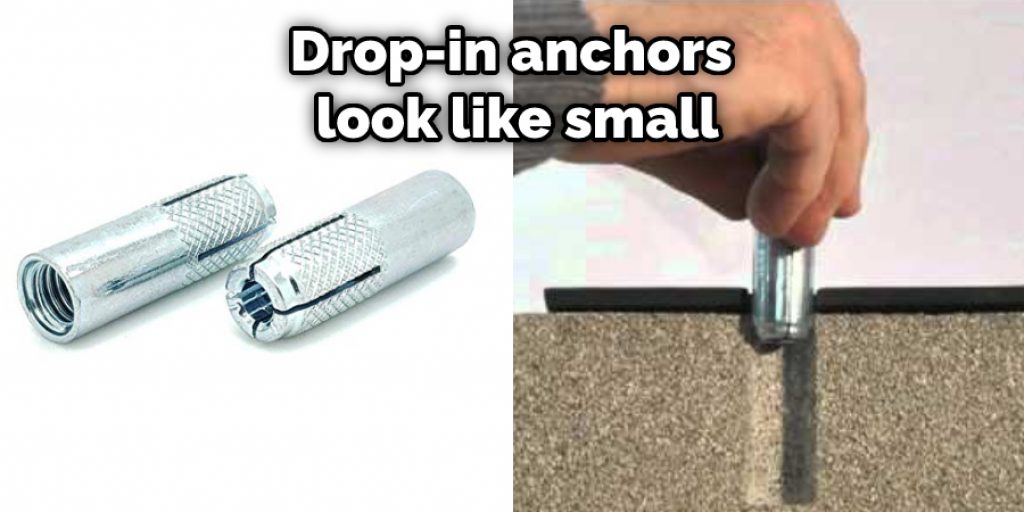
The downside to drop-in anchors is that they are not as strong as other types of anchors and are not suitable for use in load-bearing applications.
Sleeve Anchors:
Sleeve anchors are the strongest type of anchors used in concrete. They are ideal for attaching heavy objects to concrete, such as metal railings or support beams. The anchors are inserted into a predrilled hole in the concrete and then tightened with a wrench. The expanding sleeve anchor expands as it is tightened, creating a tight fit against the sides of the hole.
The downside to sleeve anchors is that they require a perfectly drilled hole to work properly. If the hole is slightly oversized, the anchor will not expand correctly and will be loose.
How to Identify a Loose Anchor in Concrete
Over time, even the best quality concrete can show signs of wear and tear. One common problem is loose anchors, which can cause everything from cracks to complete collapses. But how can you tell if an anchor is beginning to loosen?
There are a few key indicators to look for. First, take a close look at the surrounding area. If there are cracks or bulges in the concrete, it’s a good bet that the anchor is no longer secure. Another telltale sign is rust or corrosion on the anchor itself. This is a sure sign that the metal has begun to degrade and that the anchor can no longer do its job properly.
If you notice any of these signs, it’s important to act quickly and replace the loose anchor before it causes any further damage. Keep reading for more information about how to fix a loose concrete anchor.
What to Do if You Have a Loose Concrete Anchor
If you have a loose concrete anchor, the best thing to do is remove it and replace it with a new one. While it may seem like a daunting task, it’s relatively easy to do yourself. Here’s what you need to do:
First, use a hammer and chisel to break up the concrete around the anchor. Be sure to wear safety glasses to protect your eyes from flying debris. Once the concrete is removed, use a wrench to loosen the nuts on the anchor bolts. Then, remove the old anchor and bolt from the hole.
Finally, insert the new anchor into the hole and tighten the nuts. That’s it! You can easily replace a loose concrete anchor by following these simple steps.
Frequently Asked Question
How Do You Tighten a Concrete Bolt?
If the bolt is loose, you can tighten it with a wrench. First, find the correct size wrench to fit the bolt. Second, place the wrench on the bolt and turn it clockwise to tighten it.
Can You Pull a Concrete Anchor Out?
Yes, you can pull a concrete anchor out. If the anchor is loose and you can access it, all you need to do is remove it and replace it with a new one. Ensure that the new anchor is correctly sized and installed according to the manufacturer’s instructions.
Are Anchor Bolts Removable?
If the anchor bolts are removable, you can use a hammer to drive them back into the hole. If they are not removable, you will need to chisel out the old bolt and replace it with a new one.
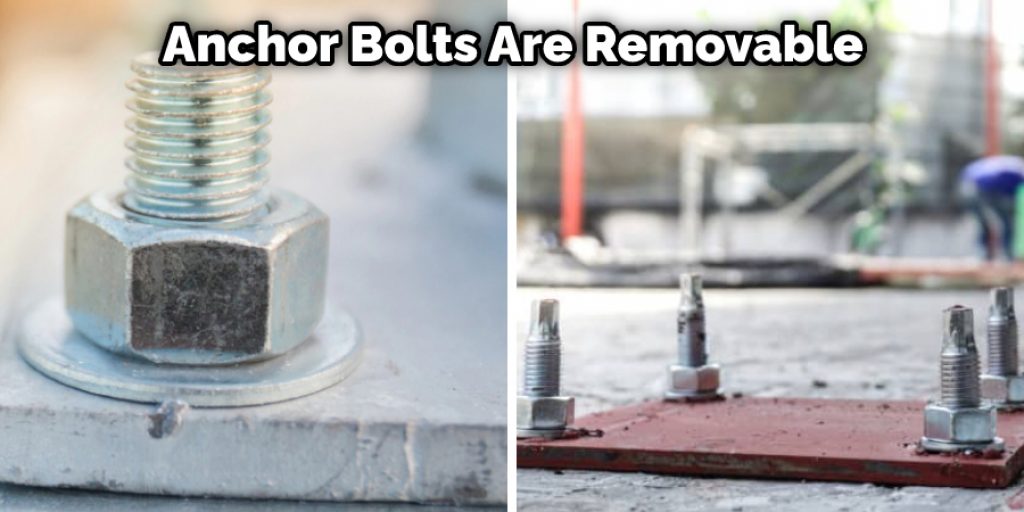
Conclusion
So, there you have it. The next time your concrete anchor starts to loosen, don’t panic. Just follow these simple steps, and you’ll be able to fix it in no time. Have any other tips for fixing a loose concrete anchor? Please share them with us in the comments below! Thanks for reading our post about how to fix a loose concrete anchor.
You May Also Read: How to Fix Standing Water on Concrete Slab
